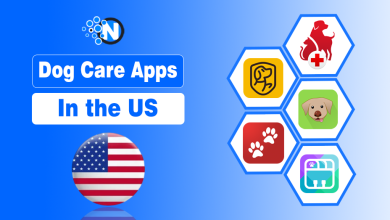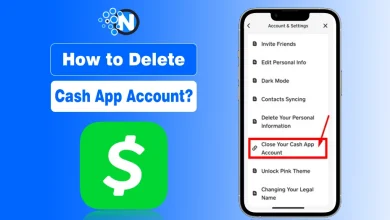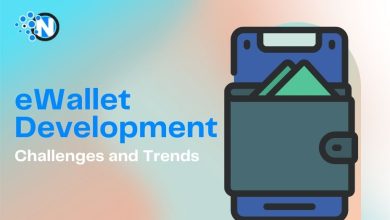Navigating Mobile Payment App Development: A Strategic Overview for Businesses

Changing consumer expectations and the rapid pace of digital innovation have transformed the financial technology landscape in recent years. The creation of mobile payment apps is one of the clearest signs of this change. What started out as a simple way to send money has grown into a dynamic ecosystem that supports everything from contactless payments at stores to banking services that are built in.
Companies that want to move into this market, whether they are new or have been around for a while, need to understand how mobile payment services work. To make a good answer, you need to know a lot about technical issues, but you also need to know a lot about user experience, legal requirements, and infrastructure scalability.
In this blog post, I will take you through a comprehensive overview of the mobile payment app development journey, examining key considerations for building a robust and compliant mobile payment application.
Let’s begin!
Beyond Digital Wallets: The Expanding Role of Payment Apps
Modern mobile payment apps have moved well beyond simply digitising traditional banking functions. They are designed to be highly responsive, secure, and user-friendly platforms that often serve as a customer’s primary point of interaction with financial services. From biometric authentication to real-time fund transfers and loyalty integrations, these apps are redefining how people manage and move their money.
Adoption trends reflect this momentum. According to the source, mobile payment users worldwide are more than 2 billion. Growth is especially pronounced in markets where mobile-first financial solutions have leapfrogged legacy banking systems.

Key Players Shaping the Market
To understand what sets leading payment apps apart, it helps to examine those at the forefront:
| App Name | Parent Company | Users (in millions) | Key Markets | Notable Features |
| PayPal | PayPal Holdings | 434 | Global | Online payments, merchant tools, cross-border money transfers |
| Venmo | PayPal Holdings | 83 | United States | P2P transfers, bill splitting, social integration |
| Cash App | Block Inc. | 57 | United States | Bitcoin, investing, banking features |
| Alipay | Ant Group | 1600 | China, Global (select markets) | QR code payments, mini programs, e-commerce integrations |
| WeChat Pay | Tencent | 1385 | China | Embedded in messaging, transfers, and lifestyle services |
| Apple Pay | Apple | 500 | North America, Europe | NFC, biometric login, embedded in iOS devices |
| Google Pay | 150 | Global | NFC, integrated with the Android ecosystem |
These platforms set the expectations for design, performance, and security that any new entrant must meet or exceed to be competitive.
Essential Building Blocks of a Mobile Payment App
1. Application Architecture
A modern architecture should be modular, API-first, and designed for scale. Microservices and event-driven patterns are often preferred, especially when handling high transaction volumes. Tools such as Docker containers and Kubernetes clusters can support dynamic scaling and reduce system downtime during updates or traffic surges.
2. Security and Regulatory Compliance
Security cannot be treated as an add-on. It is a foundational element from day one. Features like secure tokenisation, end-to-end encryption, biometric login, and two-factor authentication are now industry standards.
Equally important is regulatory alignment. Developers must adhere to frameworks such as PCI DSS, PSD2 (in Europe), and anti-money laundering (AML) requirements in every operating region. According to IBM, the average cost of a data breach in the financial sector was $5.9 million in 2023—a sobering figure that underscores the stakes.
3. User Experience and Interface Design
User expectations are high. A poorly designed interface can lead to rapid churn. Statista reports that 28% of users delete finance apps within a week due to usability issues.
Successful apps focus on intuitive navigation, seamless onboarding, instant feedback (such as push notifications), and smart integration with native device features like Face ID and NFC payments.
Common Use Cases in Mobile Payment Apps
Understanding user behaviour is key to product success. Common features include:
- Peer-to-peer (P2P) transfers: The most frequent starting point for new users.
- In-store payments (NFC or QR code): Highly adopted in Asia, expanding globally.
- Online checkouts: Streamlined ecommerce payments using stored credentials.
- Bill splitting/group payments: Especially popular among younger users.
- Multi-currency support and FX: Important for international users and travellers.
- Integrated savings, loans, or rewards: Expanding toward full-service “super apps.”
Technology Stack Considerations
Your stack should reflect both security priorities and product goals. Typical selections include:
- Backend: Node.js, Go, or Python; databases like PostgreSQL or MongoDB.
- Frontend: React Native or Flutter for cross-platform consistency.
- Security: OAuth 2.0, TLS 1.3, and hardware security modules (HSMs).
- Infrastructure: Cloud-neutral architecture, container orchestration (e.g., Kubernetes).
Business Models and Revenue Streams
Generating revenue from a mobile payment app requires strategic planning. Common monetisation models include:
- Transaction fees (ranging from 1.5% to 3%)
- Premium subscription tiers with advanced features
- Foreign exchange spreads for currency conversions
- Affiliate partnerships and merchant referral programs
That said, revenue generation should not come at the cost of user growth. Monetisation strategies must be carefully balanced, especially during early-stage scaling.
The Growing Influence of Embedded Payments
As mobile platforms grow more sophisticated and interconnected, embedded payment functionality is rapidly becoming a cornerstone of digital commerce. Rather than directing users to an external checkout or third-party gateway, embedded payments enable transactions to take place directly within an app’s interface, whether that’s a ride-sharing app, a food delivery service, or a social shopping experience.
This shift isn’t just about convenience. By keeping users within the app from discovery through to payment, businesses can dramatically reduce friction in the customer journey. It’s a smoother, more intuitive experience for users, and for companies, it opens the door to greater control over the transaction flow. That control means better access to real-time data, deeper customer insights, and increased opportunities for engagement and retention.
The financial upside is significant. A McKinsey report estimates that embedded finance could generate as much as $230 billion in revenue by 2025, combining earnings from platforms and payment providers.
On the development side, making embedded payments work involves careful integration with external services, everything from card processors and open banking APIs to fraud detection tools. All of this needs to be done while adhering to strict regulatory standards in each operating region.
For apps that aspire to be more than just tools, for those aiming to become platforms in their own right, embedded payments are quickly moving from a nice-to-have to a strategic necessity. As more businesses look to own the full customer experience, the push to embed payment functionality directly into non-financial products will only continue to gain momentum.
Final Words
Mobile payment app development extends well beyond writing code. It requires synchronised efforts across engineering, compliance, legal, product management, and customer support.
For organisations lacking in-house FinTech expertise, partnering with experienced consultants or vendors can prevent costly missteps. The journey from prototype to a fully operational, compliant, and scalable product is rarely linear, but it is absolutely achievable with the right foundation and strategic planning.




